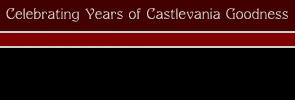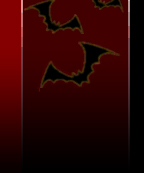|
A vast majority of this page has been contributed by Carlo "Setzer The Gambler" Savorelli, with various information
and pictures being taken from this Japanese page.
Castle Neuschwanstein, Germany
Served as a model for cover of the Dracula Perfect Selection album (not the same as the original Castlevania cover, despite the similarity) and the intro to Symphony of the Night.
Castle Neuschwanstein was built by the slightly crazy King Ludwig the II in the late 1800s as a place for social solitude.
It was opened to the public shortly after his death. Check the official
homepage for more information, or play the PC game Gabriel Knight: The Beast Within for more info about King Ludwig.
Mont Saint Michel, France
This castle appears on the cover of Akumajou Densetsu (the Japanese Castlevania 3), as
well as the American cover of Symphony of the Night. It also inspired the design of the
N64 games.
The foundations were set down in 708, named after Saint Michael, who appeared to Bishop of Avranches in a dream.
Check out Castles.org and
Medieval Castles.
Alcazar, Spain
Used in the instruction manuals of Akumajou Dracula X68000 and the Japanese Nocturne
in the Moonlight. On an unrelated note, it was also used as the basis for the castle
in Disney's Snow White and the Seven Dwarves.
Originally a fortress, the Alca'zar has also been a royal palace, the site
of Philip II's wedding to his fourth wife, Anne of Austria, and more
recently a military academy. In the upper part of the city, the oldest
foundations have been identified as Roman. Documents indicate that a
fortress existed on this site by the early 12th century known as the
Alca'zar, an Arabic word for a royal residence. The palace was enlarged in
the 13th and 14th centuries and again during the reign of King John II
(1405-1454) when towers were added and the East Tower and moat were
enlarged. Under Philip II (1558-1598) major alterations were made; slate
roofs and spires on towers were added. From 1764-1862 the Royal Artillery
College was housed here. A fire in 1862 destroyed most of the structure,
which was rebuilt about two decades later in a more romantic style than
the original building.
Bran Castle, Romania
One of the most famous castles connected to vampire lore, this appears in the background
of the Dracula X cover (the PC Engine and the American SNES game.)
Commonly known as Dracula's Castle, the Bran Castle was originally a
stronghold built by the Knights of Teutonic Order in 1212. The first
documentary attestation of the Bran Castle is the act issued on November
19, 1377, giving the Saxons of Kronstadt (Brasov) the privilage to build
the Citadel. The building started in 1378 as a defense against Turks and
later became a customs post on the pass between Transylvania and
Wallachia. From 1920 the castle became a royal residence until the
expulsion of the royal family in 1948. Today it functions as a very
attractive museum of medieval arts. Check out About Romania and the official webpage.
Castle Cagliostro
Not a real castle, but from the Hayao Miyazaki animated movie Lupin the 3rd: The Castle of Cagliostro. This seems to have inspirted the ingame graphics of the Dracula X SNES game.
Katz Castle, Germany
The castle in the background of level 4 (Germany) in Castlevania Bloodlines.
The castle is set like a crown on the hillside overlooking St
Goarshausen. It was built by Count Johann of Katzenelbogen at the end of
the 14th century. Destroyed only in 1804 and restored a century later,
Burg Katz today houses a Natural Science Grammer and Boarding School. The
path by which the castle is reached leads under the three-sroreyed main
hall into the courtyard. The view, especially to the Loreley southward,
is held to be one of the Rhein's best known.
Burg Katz is private and closed to the public. More info here.
Head back to the Features page
|



